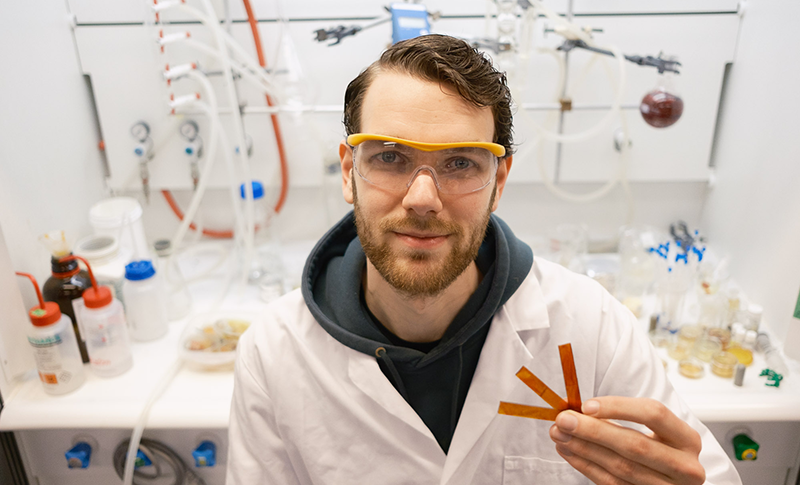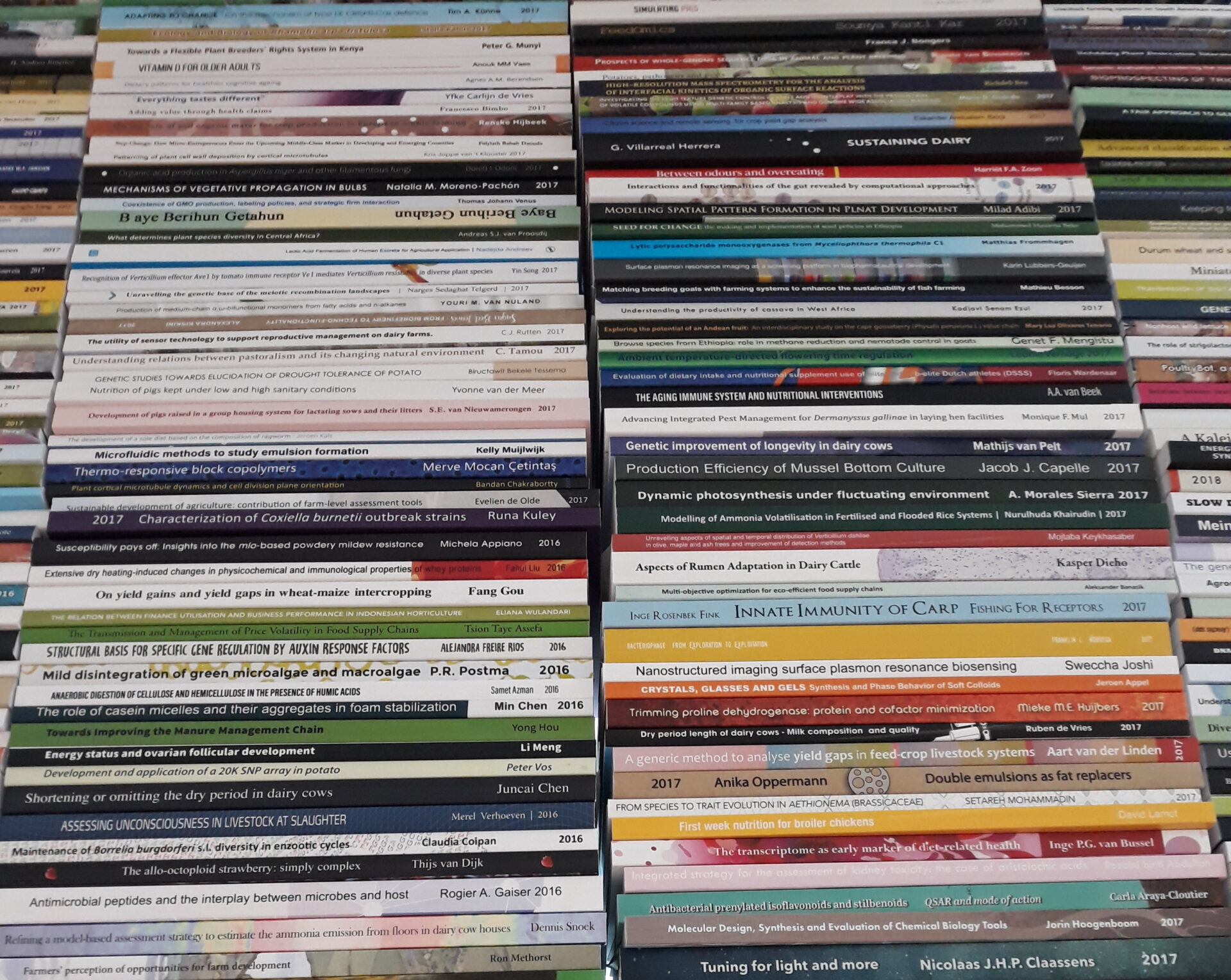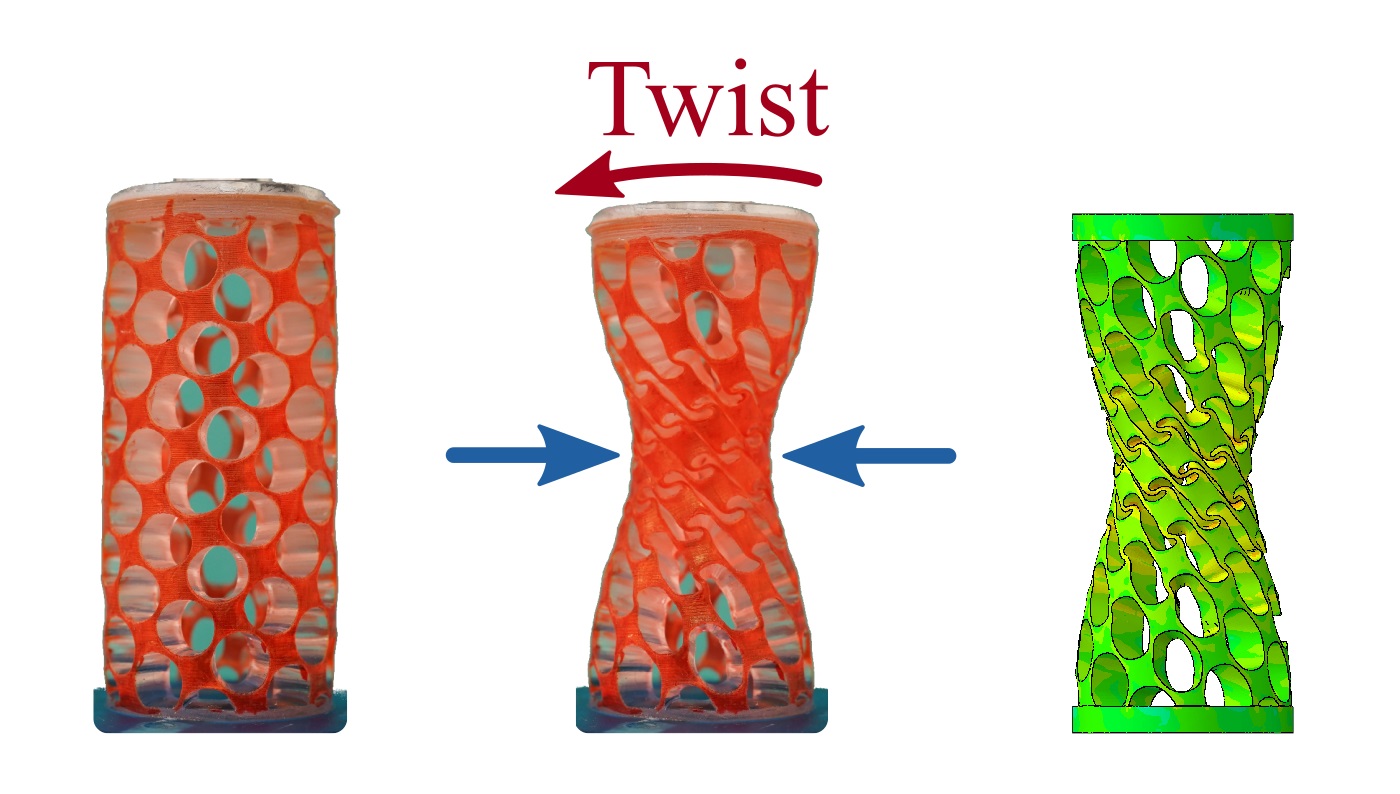Building materials, car tyres and laptop parts all contain hard plastic. It has lots of benefits but is very hard to break down. Now researcher Sybren Schoustra has developed a new kind of hard plastic that can be recycled and is even self-healing. ‘I threw together some chemicals and it was an instant success.’
Schoustra takes some scissors and cuts a rubbery piece of dark-red plastic through the middle. Like a magician, he holds the two pieces up to show his audience they really are separate, then pushes them together. A few minutes later, the two pieces have become one again. At the start of March, Schoustra got a PhD for his work on this new, recyclable plastic. ‘If you look carefully, you can still see the line where I cut the plastic,’ says the researcher, pointing to the small piece of plastic. But there is almost no sign of the cut 24 hours later. And that is just one of his designs. ‘We can make the plastic softer or harder, more elastic or more flexible by changing the mix of ingredients,’ says Schoustra.
Flexible football net
The piece of plastic looks perfectly normal, but it is quite unusual at the molecular level. In ordinary plastic, the smallest building blocks form long chains that are kept in shape by strong crosslinks. ‘You could compare it to how the strands of a football goal net are knotted together,’ says Schoustra. Those knots are permanent in ordinary plastic, but not in Schoustra’s new plastic.
It looks fine in the lab
‘We can undo those crosslinks and put them back again.’ In fact, the plastic itself restores the crosslinks. So broken pieces of plastic can grow back together spontaneously.
These flexible football nets, which organic chemists call vitrimers, have been around since 2011. ‘They have mainly been described in the literature, but there was already a prototype,’ explains Schoustra. Like ordinary plastics, vitrimers come in all shapes and sizes. ‘In my PhD research, I concentrated on one type. I wanted to make small modifications to give it new properties.’
Instant success
His plans were ambitious. Schoustra started four years ago with nothing more than a head full of ideas. ‘I combined the molecular structures of vitrimers that had been described in the literature with my own ideas.’ As an organic chemist, he thinks in terms of molecular structures. ‘I can tell from the structure what properties the material has and how it works. That’s also how I saw the molecular structures of the plastic in my mind.’
The PhD candidate walked into the lab some six months after the start of his research thinking of that picture and mixed four chemicals to make the plastic he had in mind. ‘It was an instant success.’ Schoustra is still astounded by this, three-and-a-half years later. ‘The plastic formed automatically without me having to apply heat or pressure or any additives.’ He used that first version as his starting point. ‘I came up with tricks to make the plastic more elastic or flexible, for example by replacing one of the ingredients.’
Box of tricks
Now, at the end of his PhD project, Schoustra has a box full of ingredients. ‘I call it my Lego box: I can use a handful of basic building blocks to make an endless range of new products.’ He might make a plastic that is malleable at room temperature, or one that stays hard up to temperatures of 150 degrees Celsius. The latter is useful for components that are exposed to heat, such as car parts.
It was a combination of luck, hard work and lots of options
‘The shape of the molecular network determines the maximum temperature at which the plastic remains solid.’ Schoustra refers again to the football net example: ‘You get a sturdy result with lots of knots, and more flexibility with fewer knots.’
In future, this new plastic could help reduce the amount of plastic waste. ‘At present plastic waste is incinerated, and sometimes even buried in countries outside Europe,’ says Schoustra. If you apply heat, you can remould the Wageningen plastic into a new shape and reuse it. And there will no longer be a need to replace the plastic in shoes or car tyres because of tears or minor damage. But it will be a while before this is possible, warns Schoustra. ‘Our plastic looks fine in the lab and works as we want it to, but we need to investigate whether the material behaves the same way when we incorporate it into cars, for example.’
Plenty of ideas
Looking back over the past four years, Schoustra admits the research went remarkably smoothly. ‘It was a combination of luck, hard work and lots of options. And I always had crazy ideas and Friday-afternoon experiments. My co-workers would say, “Sybren’s got another one of his ideas”. And if it didn’t work, I’d have the next idea lined up.’ Schoustra is taking a break from science for the next while. ‘This is the time for spontaneity. I’m moving to Sweden next month and I’ll see what life brings me.’ That doesn’t mean Schoustra is hanging up his lab coat for good. ‘In the future, I see myself combining creativity and science to make the world a better place.’
Sybren Schoustra received his PhD in Organic Chemistry on 7 March. His supervisors were Maarten Smulders and Han Zuilhof.

 Researcher Sybren Schoustra with the self-healing plastic he developed. Photo Guy Ackermans
Researcher Sybren Schoustra with the self-healing plastic he developed. Photo Guy Ackermans

